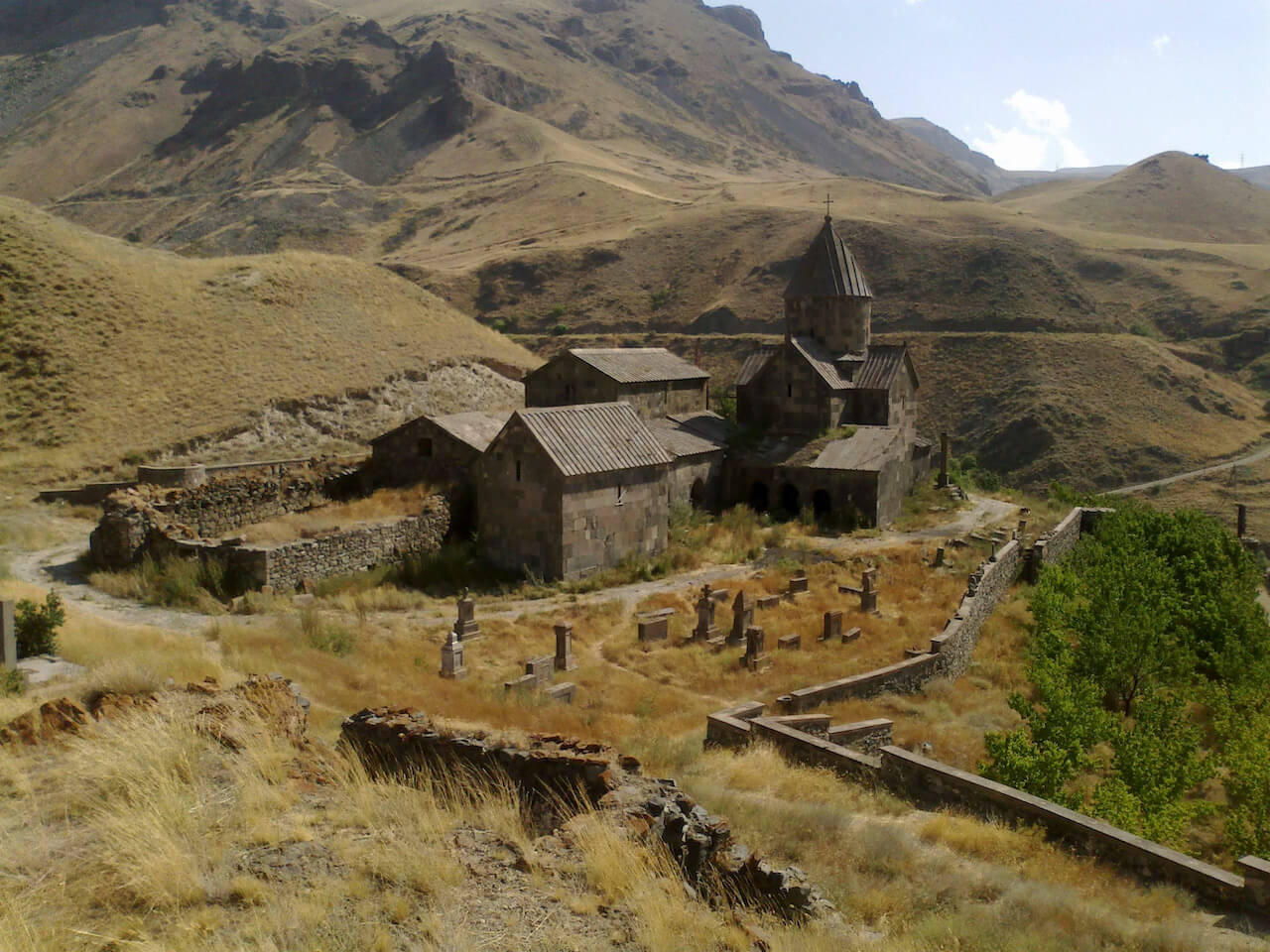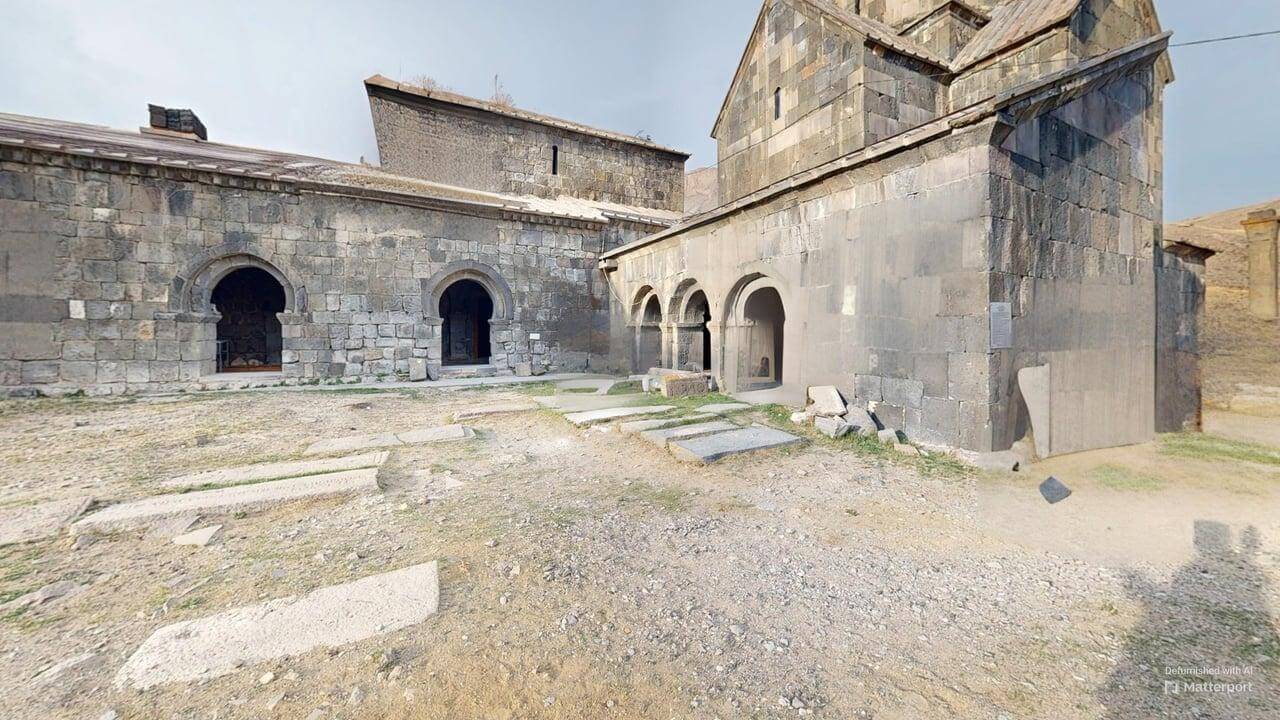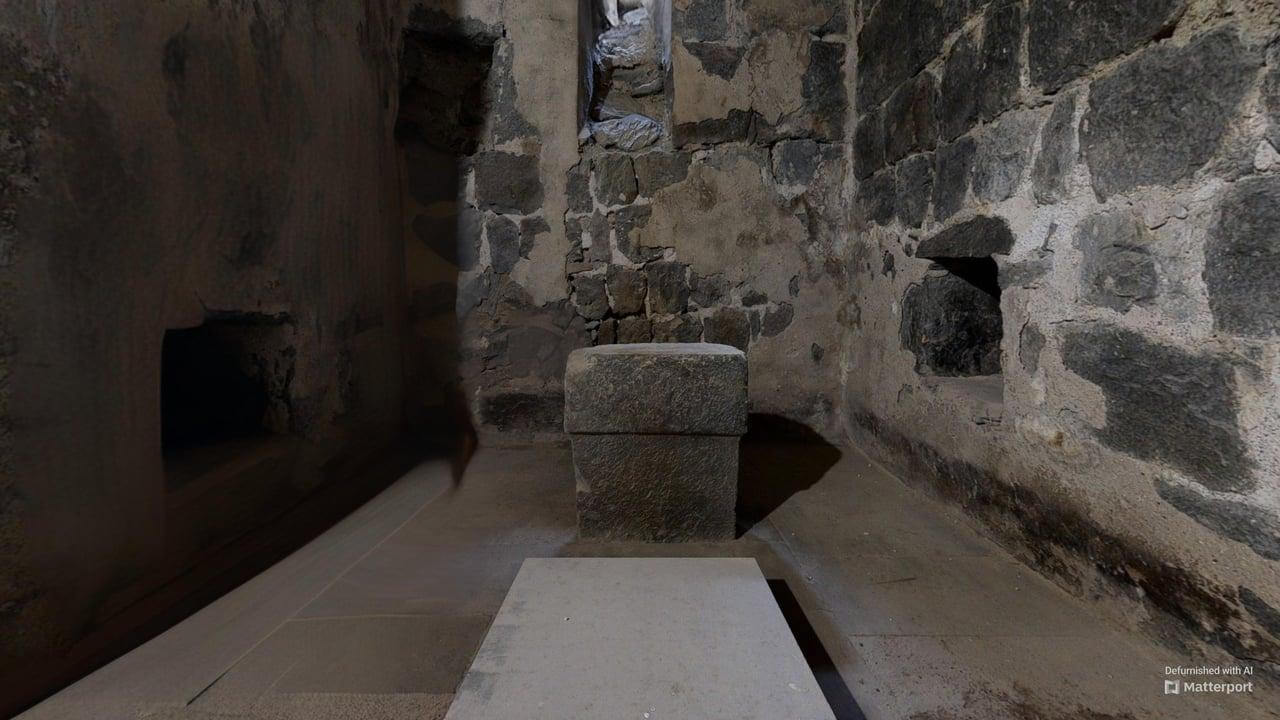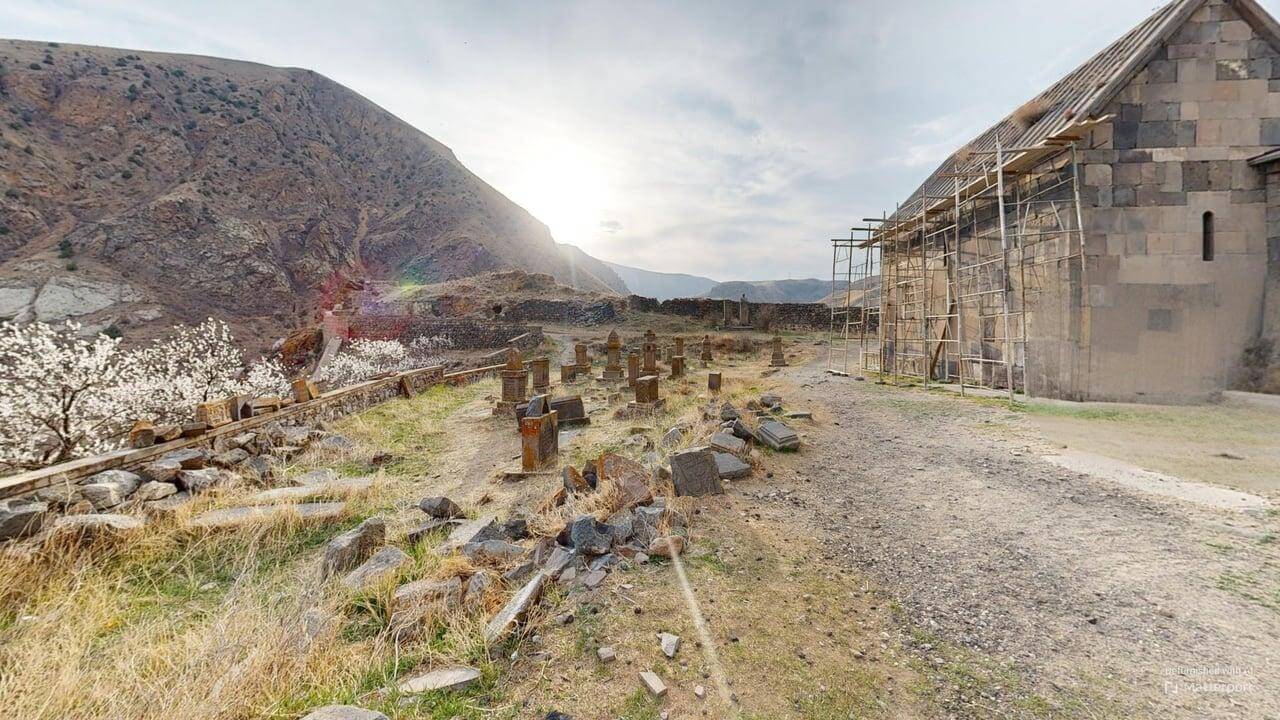Vorotnavank
Vorotnavank (also known as Vaghatin Monastery) is a medieval Armenian monastic complex located in Syunik Province, about 14 km east of Sisian, on a high plateau overlooking the Vorotan Gorge. It was founded in the year 1000 by Queen Shahandukht of Syunik.
According to historian Stepanos Orbelian, the earliest church on the site—St. Gregory’s single-nave chapel—was originally founded by Gregory the Illuminator and later rebuilt by a hermit named Father Stepanos. The site became a prominent pilgrimage destination in the Middle Ages, known for miraculous healings, especially of snake bites.
CONTACT INFORMATION
VIRTUAL TOUR
3D Model
About Vorotnavank
In 1000, Queen Shahandukht built the domed Church of St. Stepanos with a gavit (narthex), storage buildings, and a monastic complex with a large brotherhood. In 1006, her son Sevada, brother of King Vasak of Syunik, added the Church of St. Karapet and an adjoining vaulted hall to the east.
Vorotnavank featured a cruciform plan with a central dome, three apses, and richly decorated interiors, including preserved fresco fragments showing a starry blue sky and an angel. A memorial column with a cross atop it was erected near the northern wall. The complex was fortified with walls and included workshops and prayer halls. Both Queen Shahandukht and Prince Sevada were buried at the monastery. Vorotnavank was sacked by the Seljuks in 1104 but revived under the Orbelian princes. It later became a center of scholarship, hosting renowned theologians like Hovhan Vorotnetsi and Grigor Tatevatsi. Severely damaged in a 1931 earthquake, the monastery remains a significant monument of medieval Armenian architecture and spiritual life.







